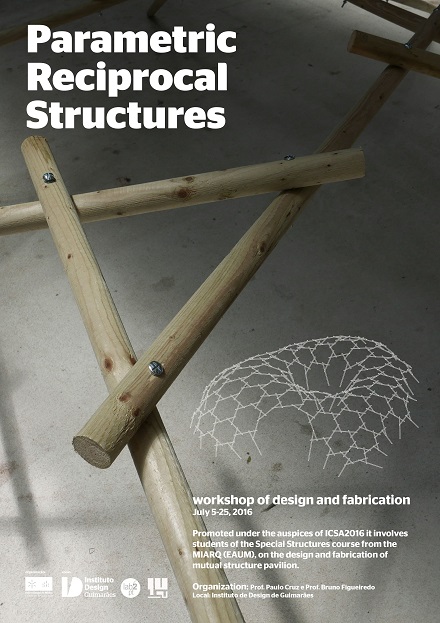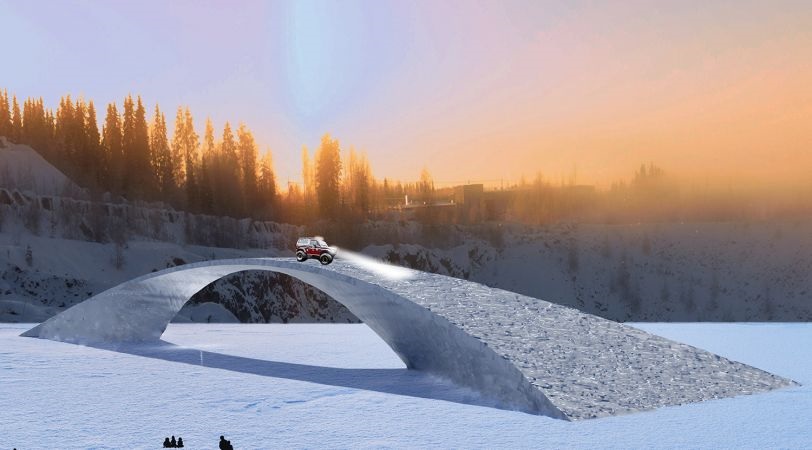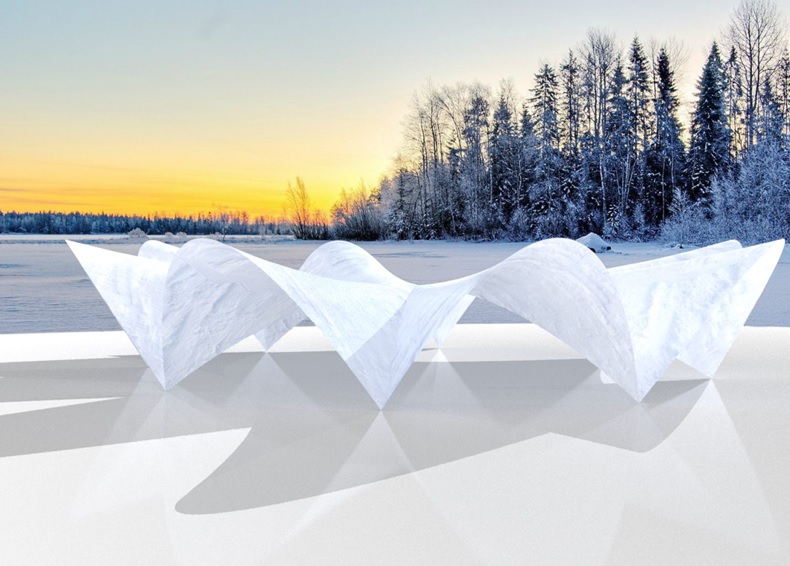One of the central challenges that needs to be maintained throughout new structural and constructional design pedagogy is how to impart knowledge about structural and constructive concepts in a manner that enhances the capacity to understand and apply them in design.
Promoted under the auspices of ICSA2016 this workshop had it genesis in proposals developed by students of the course of Special Structures of the Master in Architecture of the School of Architecture of the University of Minho (EAUM). The solutions designed by the students focused on the design of a reciprocal structure to be built at the Design Institute of Guimarães (former Tanning Factory of Ramada). The one which proposed a structural hexagonal grid was selected.

The workshop will
involve EAUM students and staff to implement constructive solutions, in the
manufacturing of all components and in the assembling of the structure:
approximately 300 timber bars wil lbe produced and more than 500 bolted connections
will be used.
The initiative aims to
explore architectural and structural design concepts, embracing the research
of: methods and processes of designing thinking; simulation and processing
tools; and manufacturing concepts and materials.
The computational
model Reciprocalizer, developed by Prof. Dario Parigi from the University of
Aalborg, was used for the morphological design exploration. This model allows:
generating three-dimensional reciprocal grids, characterized by a high degree
of freedom and formal experimentation; defining the geometric pattern of the
mesh; adapting to the context; and designing the building components.
The proposed
combination of creative aspects in the conception and construction of
structures, advanced technologies and complex architectural and structural
applications represents a valuable learning experience of collaborative work.
Organization: Prof.
Paulo Cruz and Prof. Bruno Figueiredo
|
Juuka, Finland - 28 December 2015 - 14 February 2016
|
Building with ice is one of the most environmental-friendly ways to make a building. There is a long tradition in making igloos, but the technical improvements for making ice buildings is a new field with just a handful of researchers. The Structural Ice Association in cooperation with the municipality of Juuka were the organizers of the following ice events.


Leonardo da Vinci designed a stone bridge in 1502 for the sultan of Istanbul with a span of 240 meters, which was never built.
A scale model of this bridge with a span of 35 meters was created in ice in the town of Juuka, Finland.

The thin shell is based on the 1958 Restaurant Los Manantiales by Felix Candela in Mexico. This Pavilion was constructed by students of Ghent University, led by graduating student Bram Ronsse and supervised by Prof. Jan Belis, and by students of University of Minho, supervised by Prof. Paulo Cruz.

The Candela Pavilion has a perfect shape to create with an inflatable mold.
